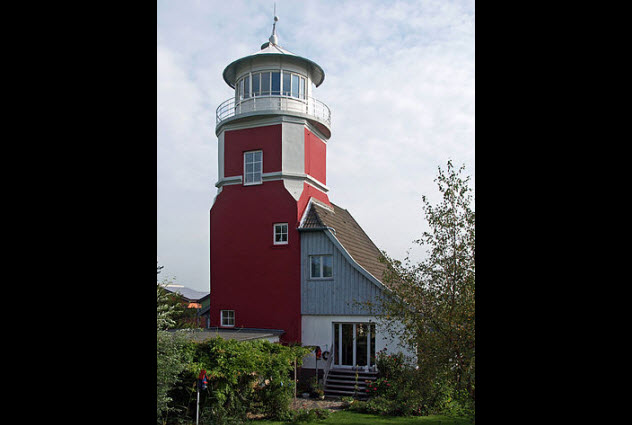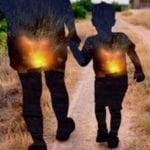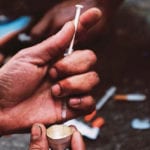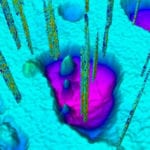 History
History  History
History  Technology
Technology Top 10 Everyday Tech Buzzwords That Hide a Darker Past
 Humans
Humans 10 Everyday Human Behaviors That Are Actually Survival Instincts
 Animals
Animals 10 Animals That Humiliated and Harmed Historical Leaders
 History
History 10 Most Influential Protests in Modern History
 Creepy
Creepy 10 More Representations of Death from Myth, Legend, and Folktale
 Technology
Technology 10 Scientific Breakthroughs of 2025 That’ll Change Everything
 Our World
Our World 10 Ways Icelandic Culture Makes Other Countries Look Boring
 Misconceptions
Misconceptions 10 Common Misconceptions About the Victorian Era
 Mysteries
Mysteries 10 Strange Unexplained Mysteries of 2025
 History
History 10 Things You Didn’t Know About the American National Anthem
 Technology
Technology Top 10 Everyday Tech Buzzwords That Hide a Darker Past
 Humans
Humans 10 Everyday Human Behaviors That Are Actually Survival Instincts
Who's Behind Listverse?

Jamie Frater
Head Editor
Jamie founded Listverse due to an insatiable desire to share fascinating, obscure, and bizarre facts. He has been a guest speaker on numerous national radio and television stations and is a five time published author.
More About Us Animals
Animals 10 Animals That Humiliated and Harmed Historical Leaders
 History
History 10 Most Influential Protests in Modern History
 Creepy
Creepy 10 More Representations of Death from Myth, Legend, and Folktale
 Technology
Technology 10 Scientific Breakthroughs of 2025 That’ll Change Everything
 Our World
Our World 10 Ways Icelandic Culture Makes Other Countries Look Boring
 Misconceptions
Misconceptions 10 Common Misconceptions About the Victorian Era
 Mysteries
Mysteries 10 Strange Unexplained Mysteries of 2025
10 Bizarre Villages Where Rare Genes Are The Norm
For many of us, we are born and we live “normal”—that is, without any genetic deformities or conditions that would render us different. But as we all know, some people are born with genetic defects or develop conditions that make them different from the rest of the world. Here are 10 villages in which those differences are sometimes the norm.
10 Araras
The Brazilian Village That Can’t Handle The Sun

Brazil is known for its sun-loving, beach party–going people. But in one remote, midwestern Brazilian village known as Araras, a large group of the population suffers from a condition that causes their skin to melt away when touched by the sun.
At an incidence rate of 1 in 40 people developing the disease known as xeroderma pigmentosum (XP) (as compared to 1 in 1 million in the US), Araras has 20 out of 800 residents who have XP, making it the largest population of XP sufferers in the world at a statistically improbable rate.
Experts claim that the exorbitantly high incidence rate is caused by the fact that the settling families of Araras all possessed the defective gene that caused this disease. But it only became clearer as those families intermarried and interbred.
The worst part is that Araras is a farming community. With such a high rate of residents unable to continue farming because of their skin developing blisters, tumors, and boils when exposed to sunlight, there has been a heavy toll on farming production. Many residents have been left struggling to find a new form of livelihood.
9 Kalachi and Krasnogorsk
The Kazakhstani Villages Where Everyone Passes Out

In March 2013, almost one-quarter of the residents of two Kazakhstani villages, Kalachi and Krasnogorsk, started falling asleep out of the blue. In this pair of small, dusty settlements on the outskirts of the Kazakh Steppe, some residents were reported to pass into unconsciousness for upwards of several days at a time.
They’d pass out in the middle of the day while walking or working and wake up to headaches, memory loss, fatigue, and overall weakness—all the downsides of a hangover without the pleasure of overdrinking the night before. All demographics in the villages were affected, from children to senior citizens to cats and dogs. Some children claimed that they had nightmares of winged horses and snakes and worms eating their hands.
For nearly two years, doctors had no idea what was causing the phenomenon. Some attributed the effects to the consumption of counterfeit vodka—because what else could it be in a town full of Russian ancestry? One somnologist claimed that they were experiencing mass psychosis similar to the Bin Ladin itch.
But finally in 2015, after analyzing the medical results of all residents, researchers found that the random bouts of sleep were caused by high levels of carbon monoxide and hydrocarbons floating in the air. They came from the hastily closed Soviet uranium mines nearby, leading to lower levels of oxygen in the air.
8 Wewelsfleth
The German Cancer Village

In the small village of Wewelsfleth in northwestern Germany, a tiny population of 1,500 Germans calls it home. But one thing makes this average village stand out: In almost every single household lives a cancer victim. Statistically, residents of Wewelsfleth have a 50 percent greater chance of developing cancer than everyone else—for reasons that no one can figure out.
Some residents put the blame on the three nearby nuclear power plants, with one of them standing in the direction that the wind blows. Unfortunately, when the nearby University of Lubeck conducted a study on it—including other possible causes such as the toxic spray paints once used at the neighboring shipyard, asbestos, and pesticides used in farming—they found no evidence that could lead to a certain single cause.
It’s also possible that the residents of Wewelsfleth are suffering from the “screening effect”: Since they are more afraid of developing cancer, they are more likely to all get themselves tested for it, thus explaining why so many of them have found they have cancer. Either way, when around 142 cancer cases exist in a village of 1,500 residents, it doesn’t take a genius to see that something’s different.
7 Hogewey
Dementia Village
Instead of throwing their dementia-afflicted elderly in a nursing home that feels more like a living-person cemetery, a group of health-care workers in Amsterdam decided to create an entire village where dementia patients could live out the rest of their lives in normal conditions.
Meet Hogewey, the village where everyone is either a dementia patient but doesn’t know it or a health-care worker acting out a village role by working at the village salon, grocery store, restaurant, or movie theater.
Family members and friends of the patients are free to visit as often as they like. With less hands-on care and more freedom for the patients, it actually costs less for them to send their dementia-afflicted grandfather or grandmother to the village than to send them to a regular care facility.
A wall surrounds the village (Shutter Island, anyone?), and if anyone accidentally starts wandering toward one of the doors, a staff member comes and suggests that they try another route.
6 Yangsi
Village Of The Dwarfs
Yangsi, a remote village in China’s Sichuan Province, has earned the unusual moniker of “Dwarf Village.” Over the last century, Yangsi has had a highly disproportionate number of residents affected by stunted growth, with about 40 percent of its population (36 of its 80 residents) standing shorter than 120 centimeters (4′). Reports of this strange phenomenon date back to 1911, with an English scientist in 1947 claiming that he had seen hundreds of dwarfs living in the remote valley of Yangsi.
Usually, a person only has a 1 in 20,000 chance of having stunted growth, meaning that the number of dwarfs in Yangsi is almost statistically impossible. Though no one knows why this is, several theories have been brought up and debunked.
One suggested a high concentration of mercury in the soil, which hasn’t been proven. Another theory claims that it’s the bad feng shui of evil spirits in the area for not having buried their ancestors properly.
Yet another theory—better described as a legend—is that one day, a long time ago, a man named Wang found a black turtle with strange feet. When everyone else suggested that he let it go, he decided to cook it and eat it, thus cursing the village forever. Thankfully, the youngest generation of Yangsi doesn’t seem to fall under this supposed curse.
5 Ikaria
The Island Where Everyone Lives Long
In the US, the average American lives to age 79. But on the Greek island of Ikaria, one in three residents lives to age 90, with others reaching their centenarian years. Named after the boy who flew too close to the Sun, Ikaria can probably thank the lesson of Icarus as one of the reasons for their unusually long lives: Residents of Ikaria are disconnected from the rest of the world and find solace in afternoon naps and emphasizing the concept of happiness over sadness and stress. (Is it a surprise that they’re Greek?)
Another possible reason for their long lives is their diet. Still almost entirely removed from the Westernized world, their diet has stayed consistent in a world of refined sugars and fast-food joints, with a focus on beans, local vegetables that contain 10 times more antioxidants than red wine, potatoes, goat’s milk, and not too much meat or sugar.
Ikaria is known as one of the world’s “Blue Zones,” areas where people live longer than the rest of the world. And not only do they live longer, but they live healthier, with most of their deaths happening naturally rather than through abrupt illnesses or outside diseases.
4 Velikaya Kopanya
‘Land Of The Twins’

In Western Ukraine, the village of Velikaya Kopanya has earned itself the name “Land of the Twins” for the record-breaking percentage of twins in its population, with 61 pairs of twins out of 4,000 residents. And it’s not a new phenomenon. The common occurrence of twins in the village has been happening for at least three generations, as birth records earlier than that no longer exist.
While no one knows exactly what’s causing the unusually high number of twins, it’s been found that not only is it occurring in humans but also in cows, with cows giving birth to twin calves at an unusually high rate as well. Many speculate that it’s the local well giving them their twin-birthing powers.
One local story tells of a woman who lived in a town over 160 kilometers (100 mi) away who couldn’t give birth. When she traveled to Velikaya Kopanya to drink from their well, she got pregnant within a few months and gave birth to a set of twins.
With two or three sets of twins being born every year, locals from other towns have come in and started courting their girls, hoping to catch some of the magic twin gene.
3 Bengkala
The Village Where Everyone Speaks Sign Language
In the US, around 2 or 3 out of every 1,000 births will be a deaf or partly deaf child. In Bengkala, a small village in northern Indonesia, 42 of its 3,000 residents have been deaf since birth. This unusually high rate of deafness (5 times higher than the rest of the world) is attributed to a geographically centric recessive gene called DFNB3, which the village has had for over seven generations.
Deafness is so common in Bengkala that, unlike in the rest of the world, it’s no longer seen as a detriment. Instead, the deaf, or kolok, are treated the same as everyone else. Kolok children learn in school beside hearing children, and everyone knows the ancient local sign language known as kato kolok.
Recessive gene aside, locals believe that deafness is a curse from a certain legend in which two people with magical powers cursed each other with deafness and that the name of their village, Bengkala, means “a place for someone to hide.” Kolok also form their own community in the village, and residents think of the kolok as physically strong, more resilient, honest, and loyal.
Kolok guards are also known for coming to work earlier than hearing guards, and kolok guards are stricter than their hearing counterparts, beating criminals for longer and harder because they can’t hear the screams.
2 Salinas
The Town Of The Late Penises
When most of us are born, the doctor can tell right away whether we’re a boy or a girl by looking between our legs. But in the small, remote village of Salinas in the Dominican Republic, some boys don’t grow their penises until they reach puberty, with their families believing them to be and raising them as girls until their sudden genital sprouting.
The condition is a rare genetic disorder caused by a missing enzyme. It results in a late surge of testosterone that only comes at the age of puberty, which forms their penis at the same time as the deepening of their voice.
In Salinas, these boys are known as guevedoces, translated as “penis at 12.” They happen as regularly as every 1 out of 90 boys, with them growing up with less facial hair and smaller prostate glands.
They were only “medically discovered” in 1970, but in Salinas, it’s been happening for as long as anyone can remember. Now they’re medically referred to as pseudohermaphrodites, which is thankfully not as bad as today’s resurgence among youth of pseudophilosophicals.
1 Antioquia
The Village Where The Elderly Care For Their Children’s Alzheimer’s
In most of the world, it’s the children who take care of their parents when their minds sadly begin to regress into diseases like Alzheimer’s. But in one mountainous village in northwestern Colombia, people do the opposite.
In the small village of Antioquia, over 5,000 people are afflicted with early-onset Alzheimer’s, making it the world’s largest population of Alzheimer’s sufferers. This is due to many centuries of inbreeding in the village, resulting in the consistent passing down of a defective gene that causes what is known as the “paisa” mutation. The mutation is aptly named after the residents of that area who are known as Paisas.
This congregation of Alzheimer’s sufferers has led to multiple cases where elderly parents in their seventies and eighties are forced to take care of their children, who are in their forties, fifties, and sixties. The children developed Alzheimer’s at a young age, almost the reverse of every other place in the world.
Researchers in the area use the village as a testing ground for Alzheimer’s. One researcher studied brains at his local “brain bank,” where families donate the brains of their late Alzheimer’s-afflicted relatives to aid in the research of this disease. Unfortunately, no headway other than preventative treatment has been made.








